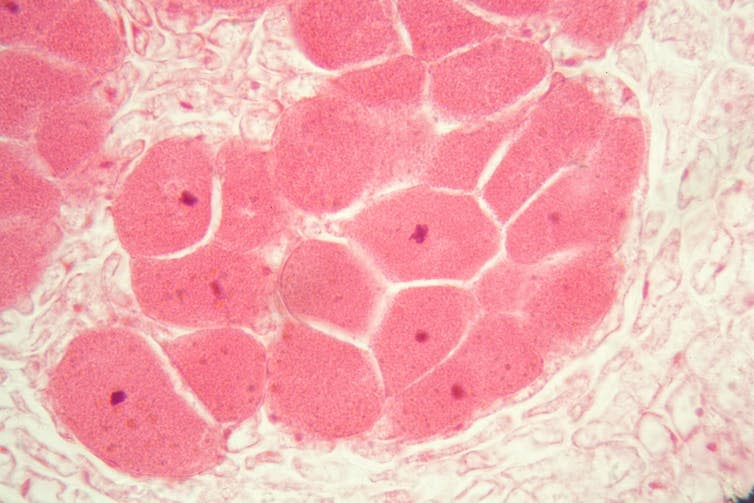From lentils to chickpeas, and even the humble baked bean, legumes are perhaps best known as another plant-based source of protein. These plants are environmental heroes: they work together with soil microbes to “fix” nitrogen from the air, enriching the soil with nutrients for them to thrive.
As their nitrogen-fixing capacity is better understood, scientists hope to find ways to increase productivity, and eventually apply some of these effective soil-enriching characteristics to other crops such as cereals. With the ability to fix nitrogen, crops would need less nitrogen fertilizer while improving soil health.
Pulses, the dry edible seeds of leguminous plants, are staple foods in human and livestock diets worldwide. Throughout Europe and the US, they are commonly eaten as canned beans, such as chickpeas and lentils, and in sub-Saharan Africa, cowpea is one of the most important legumes.
High in protein, carbohydrates, dietary fibre, vitamins and minerals, pulses play a fundamental role in nutritionally healthy diets. Both the seeds and leaves are also used as livestock feed. For smallholder farmers in developing nations, nutritional pulses are a cost-effective substitute for animal protein and are a major part of regular diets.
In Western Kenya, Rwanda and Burundi, people eat an average of more than 30kg of beans per year, and many African countries recommend pulses as a meat alternative in dietary guidelines. Pulses can also be stored for long periods without affecting their nutritional content.
The magic inside root nodules
Around 100 million years ago, legumes developed the natural ability to harbor beneficial bacteria inside dedicated structures called root nodules. Here, bacteria convert gaseous nitrogen from the air and soil into a form that is accessible to the plant as nutrients.
Therefore, legumes require less nitrogen fertilizer than cereals and other vegetable crops. A high performance legume can fix up to 300kg of nitrogen per hectare, which would cost farmers about $1 per kg of fertilizer to meet the plant’s nutritional needs.
At the Enabling Nutrient Symbols in Agriculture project, we are trying to understand how exactly legumes do this. We are investigating how these nitrogen-fixing root nodes developed only in legumes in the first place. With this knowledge, we hope to find ways to increase the efficiency of nitrogen fixation within the root nodules and maximize the growth and yield of legume crops.

Beneficial bacteria
My research group is investigating how legumes can fight beneficial bacteria and avoid disease-causing microbes. While bacteria like rhizobia in these root nodes help plants obtain nutrients, other soil microbes including bacteria and fungi can cause disease and prevent plants from converting as much nitrogen. So the plant must have a defense mechanism that keeps disease-causing microbes at bay. This may also prevent it from fully combating beneficial bacteria.
Our team of researchers has identified potential factors that limit nitrogen fixation in nodules Medicago, also known as barrel medic or barrel clover. This legume is often used for research and is not grown for consumption. By studying these limiting factors, we hope to improve the efficiency of nitrogen fixation without affecting the crop’s built-in defense mechanisms to protect it from disease.
After studying this mechanism in the research legume, researchers are studying a number of relevant crop legumes such as soybean and cowpea to understand how widespread and applicable the underlying biological mechanisms are, and the they can be used to improve other pulses in the future.
Despite being some of the oldest domesticated crops, many legumes are much less adapted to farming and therefore have significant potential for further improvement through breeding and genetic engineering, making them more suitable and sustainable for modern food systems.
Benefits of more efficient nitrogen fixation in legumes would include increased growth and biomass and, hopefully, higher protein content in the seeds or pulses. This would increase the nutritional value per crop, meaning that more high-quality, nutrient-enriched food could be produced per hectare.
Higher yields would create new opportunities for small-scale and subsistence farmers to grow and exploit legumes – such as soybeans – as cash crops to improve rural livelihoods. More productive legumes may be more effective as a rotation crop that improves soil health, which is especially important for farmers dealing with degraded soil, such as those found throughout sub-Saharan Africa.
The more we know about this unique ability of legumes, the greater our chances of successfully developing other crops with the same ability. Such a development, although several years away, could revolutionize sustainable agriculture, especially in areas where access to synthetic fertilizer is already limited by cost and availability.
Extending nitrogen fixation to other crops has long been an ambition of crop scientists around the world and as the study of plant biology progresses, the pulse of progress is increasing.
This article from The Conversation is republished under a Creative Commons license. Read the original article.


Sebastian Scornack receives funding from Bill and Melinda Gates Agricultural Innovations. He is also listed as an inventor on a patent filed by the University of Cambridge on a gene that appears to limit nitrogen fixation.